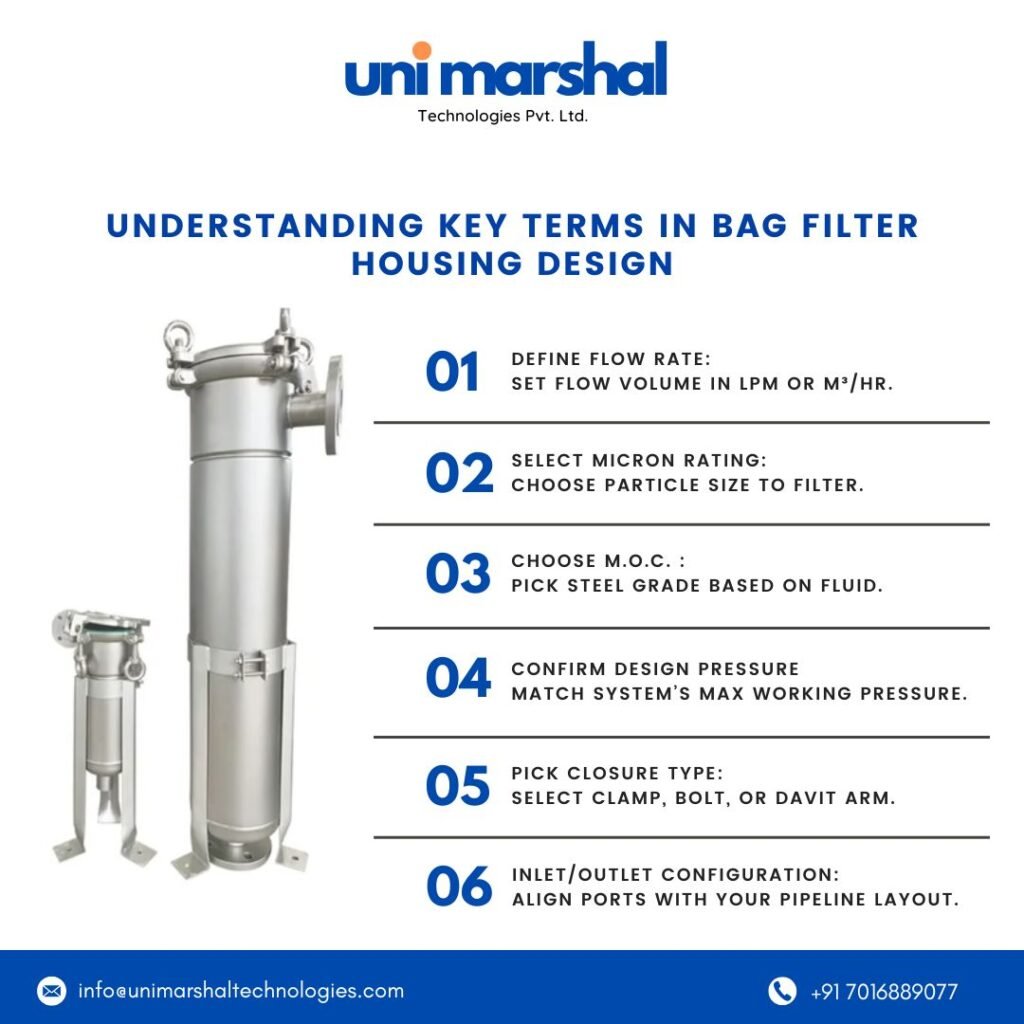When it comes to industrial filtration, choosing the right bag filter housing is crucial for system efficiency, product quality, and operational safety. Whether you’re a plant engineer, procurement officer, or system integrator, understanding a few fundamental terms can significantly improve your decision-making.
At Unimarshal Technologies, we specialize in filtration solutions engineered for precision and performance. In this article, we simplify the 6 most important terms you need to know when designing or sourcing a bag filter housing.
1. Define Flow Rate
What it means: The flow rate is the volume of fluid that passes through the filter housing over a specific time, usually measured in liters per minute (LPM) or cubic meters per hour (m³/hr).
Why it matters: Proper flow rate ensures optimal filter performance without pressure loss or media damage. Undersized housings restrict flow; oversized ones add unnecessary cost.
2. Select Micron Rating
What it means: The micron rating defines the size of particles the filter media will remove. For example, a 10-micron bag filter traps particles that are 10 microns or larger.
Why it matters: Selecting the correct micron rating ensures your process fluid meets quality or purity standards. Lower ratings mean finer filtration but may require more frequent replacements.
3. Choose MOC (Material of Construction)
What it means: MOC refers to the material used to build the filter housing, such as SS 304, SS 316, or special alloys.
Why it matters: Different applications require different resistance levels to corrosion, temperature, and chemical compatibility. Choosing the right MOC increases longevity and safety.
4. Confirm Design Pressure
What it means: Design pressure is the maximum operating pressure the housing can withstand safely.
Why it matters: Ensuring your housing matches or exceeds system pressure avoids failure risks and ensures compliance with industry standards (e.g., ASME, PED).
5. Pick Closure Type
What it means: This refers to how the housing lid is secured. Common types include V-clamp, swing bolt, and davit arm closures.
Why it matters: The right closure improves ease of maintenance, operator safety, and system uptime. Frequent changeouts often benefit from tool-free or quick-access options.
6. Finalize Inlet/Outlet Configuration
What it means: The location and direction of inlet and outlet ports, such as side-in, bottom-out, or inline.
Why it matters: The right configuration reduces pressure drop, simplifies piping layout, and improves space utilization.
Get Expert Support from Unimarshal Technologies
At Unimarshal Technologies, we don’t just supply products — we help you engineer the right solution from the ground up. Our bag filter housings are built to international standards and optimized for a wide range of industrial applications, from water treatment to petrochemicals.
Looking to specify a filter housing for your next project?
Let’s talk. We’ll guide you from design to delivered.


